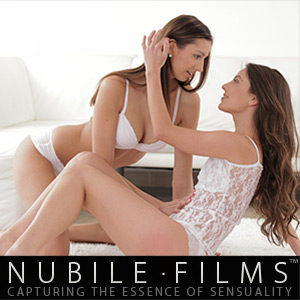Kink
Looking for the “true way” of BDSM
In a wonderful example of serendipity, yesterday I stumbled into two unrelated yet delightfully connectable things. The first was a trollish post on an Italian BDSM forum, in which a young woman writing in third person expressed her horror at the lack of “proper protocol” at a munch she had attended. You could almost smell her righteous disdain for anyone not subscribing to her view of kinky etiquette, and the guffaws behind the numerous replies generally amounting to «shut up and don’t you dare judging how others enjoy their quality time».
The other was, in fact, two documentaries about the BDSM lifestyle. Making mistress More, by Beverly Yuen Thompson, can be watched online in its entirety on Vimeo and deals with the management of La domaine Esemar, a place advertised as «the world’s oldest BDSM training chateau». The ceremony, by Lina Mannheimer, focuses instead on the domination style of 84-years old Catherine Robbe-Grillet, possibly the most revered dominatrix in Europe since the late 1960s.
I strongly suggest you to click on both the above links to get an idea of what I’m talking about. Briefly put, however, the former documentary reveals how the “chateau” is in fact little more than a mobile home in the woods out of Albany, NY. The manager, known as Master R, is a former musician and a nature-loving nice chap who keeps a somehow homely court of like-minded enthusiasts treating La domaine as a safe haven from the pressure of “normal” life. They look like a decent, fun-loving bunch whose passion keeps the place more or less running despite the obvious lack of means and organization. As a matter of fact, the main story concerns a former slavegirl drafted into service as a professional dominatrix when the previous Lady of the house suddenly quit.
Conversely, Madame Robbe-Grillet is as stylish and aristocratic as it gets. A former actress and fiction writer, she never advertised her trade yet she does live in a castle-like manor and cultivates a detached, ritualistic idea of erotic domination games. Aesthetics and elegance are paramount, so much that the only submissives she still accepts in her presence look like models or A-list actors and actresses. She is the sort of person you expect to play chess on par with master players – while holding a philosophical conversation in which each witty metaphor is commented by the appropriate move on the board – as she sips an impossibly precious wine from a crystal glass held on a tray by a silent butler.
Watching the two documentaries back to back inevitably led me to compare their wildly different views of BDSM. These are the little insights I have reached:
Each approach is the byproduct of its cultural environment
The French mistress took her first steps into the world of erotic domination in a country still recovering from the shock of WWII and adjusting to the new geopolitics. Dwarfed by the superpowers looming east and west of it (not to mention Britain, up north), to retain whatever grandeur it could France was desperately clinging to its old cultural identity. That included a strong sense of social classes and a fading aristocracy. To this day French sex personals frequently use the ‘BCBG’ acronym, literally translated as ‘good style, good class’ but actually meaning ‘rich, well-educated, high bourgeois’ – a socially accepted sign of self-entitlement inconceivable in most other countries. In such historic context appearances played a major role in reinforcing a higher social status, so attention to details and rituals was especially important.
Also, the distinction between BDSM and pathological sadomasochism was yet to come. Adopting a very stylized and intellectual approach to kink was an excellent way to distinguish oneself from the violent outbursts of criminals and madmen. Since there were no websites or manuals to learn from, formal hierarchies additionally ensured that technical information was reliably transferred to newcomers. Finally, shrouding the kinky lifestyle with a patina of philosophical, ritualistic respectability offered a modicum of social protection in times when a soiled reputation could doom a woman’s entire life.
On the other hand, the American outfit was founded in the 1990s, in a strongly sex-positive era and in a country that takes pride in its social diversity and equality. BDSM was not just an established household word, but a cool albeit still mysterious lifestyle celebrated by the media and the arts. Information about the various practices was abundant and quite easily accessible. Major cities had publicly advertised kinky social clubs, the gay leather scene was very visible and the Internet would soon easily connect people all over the country.
La domaine’s approach is also the fruit of a culture focused on empathy: communication and care for everyone’s well-being were actively encouraged, as was looking at the person behind the job – or the role – he fulfilled. We are all rather familiar with this sort of milieu, so I won’t linger too much on it. Generally speaking, however, it is safe to say that in this case integrating every aspect of one’s personality is considered a desirable goal, content is favored over appearances, and openness is seen as a virtue.
Keep these observations in mind as you watch the documentaries, and you will easily see how each approach is the direct result of its surrounding culture, reflecting its values and norms. We can also imagine how embarrassing a meeting between Master R and Madame Robbe-Grillet would be. I doubt they could tolerate each other’s presence for more than a few seconds, and surely they couldn’t share a play scene if their lives depended on it. By the way, communication would also be a problem since she’d refuse to speak any language other than Parisian French, and the American documentary shows he can’t even correctly pronounce the French name of his own business.
These approaches cannot be moved out of their context
The different interpretations of BDSM aren’t just the result of their cultures, but a part of it. The incompatibility between them doesn’t stop with the protagonists of the documentaries: think of the contempt most French kinksters would feel toward those uncouth Yankees and their loud, excessively friendly ways – or how repelled the Americans would be by the aloofness and hyper-formal requirements of the European dominatrix!
Eroticism has always idolized foreign lands and cultures, picturing them as paradises of sensuality. That’s however just a thinly-veiled hope that somebody, somewhere, has it better than us, since sexual dissatisfaction is also a constant throughout the ages. Arousal feeds on novelty, after all, so becoming inured to whatever is available is hardly surprising. This is why a New York trailer uses a fairytale-sounding name, and why in 2014 a woman still pursues the veneer of an early Nineteenth century lifestyle.
Yet again, it only takes a few minutes of watching the docs to realize that Master R would be very unhappy if he really had to live in an European castle, following its sober rituals and having to forsake his beloved country music and the football nights. Mistress Grillet, used as she is to eating very little to keep her figure – and never with clients in order not to tarnish her superhuman aura – would similarly be horrified by all those communal meals, the overabundant portions and breach of personal space.
I venture that these observations don’t apply to these specific examples only, but are generally true. We see it in example in how the gay scene changes from country to country, in how differently fetish play is experienced in various nations or even in how alien real Japanese-style bondage as performed by natives and on location looks to our eyes, no matter how many western kinbaku videos or shows we’ve watched and studied before. The warped take on foreign BDSM in China is yet another brilliant example of this.
Kink is universal
That being said, the different approaches of our protagonists once more remind me of how universal unusual eroticism is. No matter how dissimilar they look, they both pursue the same archetype of eroticized power imbalance. Or, in a less highbrow wording: sexualized master/slave scenarios are and always have been part of the human nature. This isn’t exactly a breakthrough discovery, either. Historians and ethnographers routinely find evidence of “kinky behavior” throughout the history of mankind, from ancient Greece to modern times.
BDSM and other erotic fantasies are, after all, what differentiates human sexuality from that of less evolved species. All animals reproduce; very few have recreational sex; none but (some) humans can conceive it as something other than basic genital action. When will we finally drop the pretense that kinky sex isn’t “strange”, but a celebration of our species’ greatness?
The social perception of unusual sex evolves very rapidly
Timewise, Madame Robbe-Grillet and Master R are separated by forty years only. That’s a rather short time by most standards, yet it was enough to completely change the social perception of the erotic games they practice. As mentioned before, when the French mistress first approached kink harboring BDSM fantasies was still ground enough to land you in an asylum, if you were from the wrong social class. Today it mutated into a cool fad selling millions of books worldwide.
I for one was under the impression that this was mainly a consequence of the introduction of the Web – but it turns out I was wrong. In fact, reading Julie Peakman’s The pleasure’s all mine – A history of perverse sex I discovered how quickly the acceptance of sexual behaviors have always changed throughout history – usually every half a century or so. Even the current war on pedophilia, in example, would have been unconceivable just fifty years ago. Who knows how BDSM and other deviations will be seen, come the Twentieth-second century? Making predictions, it seems, is a fool’s game.
There is no right way to approach BDSM
Beside all the above important-sounding realizations, the most important lesson (hopefully just a refresher) learned from watching those documentaries back to back is probably the simple fact that there is no One True Way of enjoying BDSM. Or, to be more precise, of course there is a common foundation of mutual respect, safety, competence, commitment and so on – including the oft-mentioned ‘SSC’ principle – but then play can take the form most suitable to the participants’ needs, tastes and views. Casual players who are just into very light role play are no less “real” than 24/7, extreme lifestyle experts.
Which brings us full circle to the debate from which I started this post. What’s with the supposed “BDSM protocol” so eulogized by that young lady, and by countless clueless websites? It is well established that the diehard “Old guard” and “training houses” myths are just a misinformed rehash of mostly fictional lore: the existence of one protocol all submission relations should conform to is equally bunk. Please create your own, if you like, but do not try imposing it on others who probably know better. Or do, come to think of it. As we have just seen, if it clicks with the cultural environment, you might as well manage to influence and shape of kink for the generations to come. For a while, at least.
This article has been republished with permission from Ayzad
Please visit Ayzad’s website to view the original post and more of Ayzad’s works.
Image courtesy of Shutterstock
Have an amazing experience or tips you like to share on SimplySxy? Drop us an email at editorial@SimplySxy.com!
A journalist and author specializing in alternative sexualities, I study strange things to explain everyday life. I wrote a few best-selling books including BDSM – A guide for explorers of extreme eroticism and XXX – The dictionary of unusual sex. If my English feels odd sometimes, it’s because I am actually Italian.

























